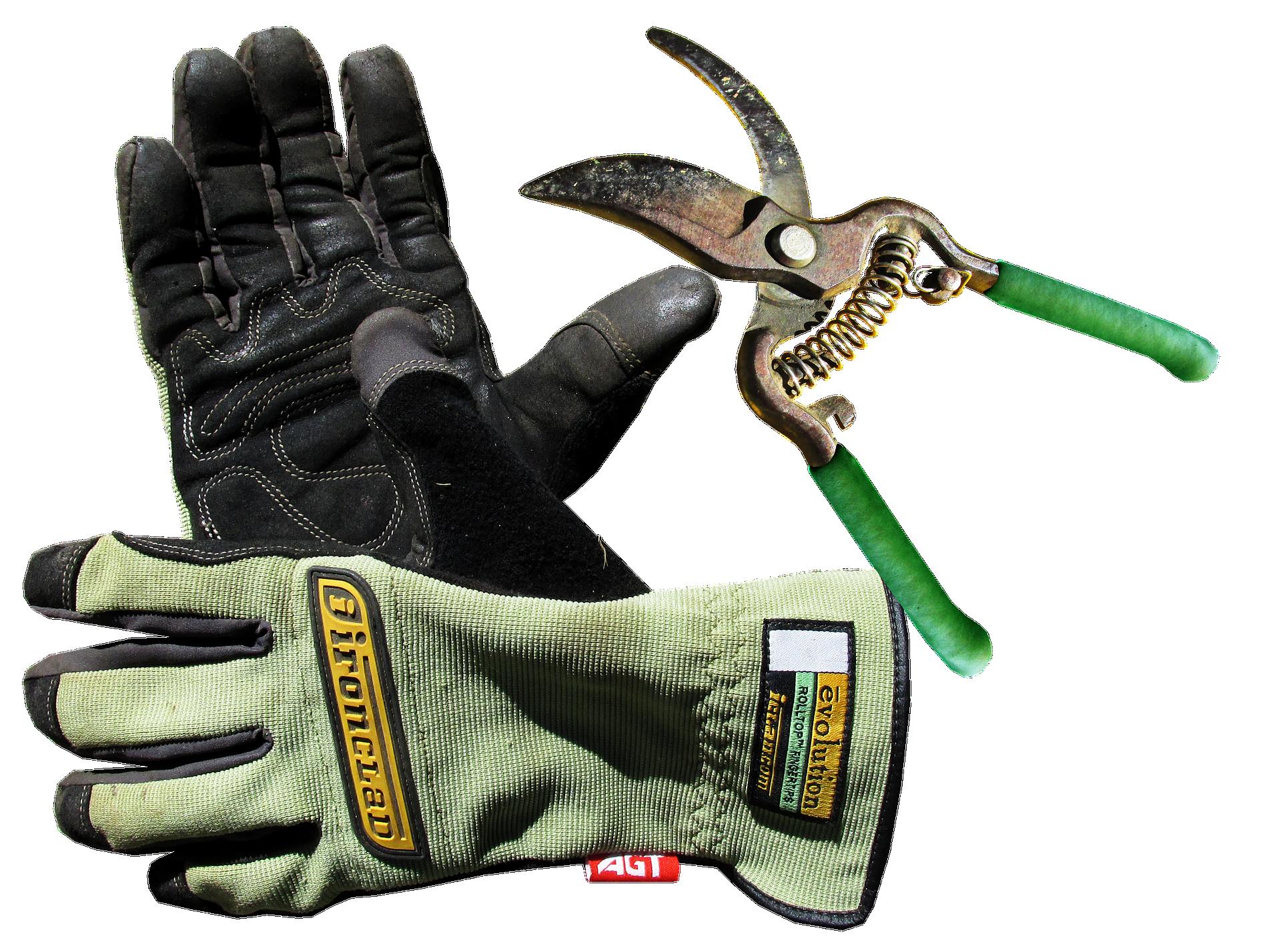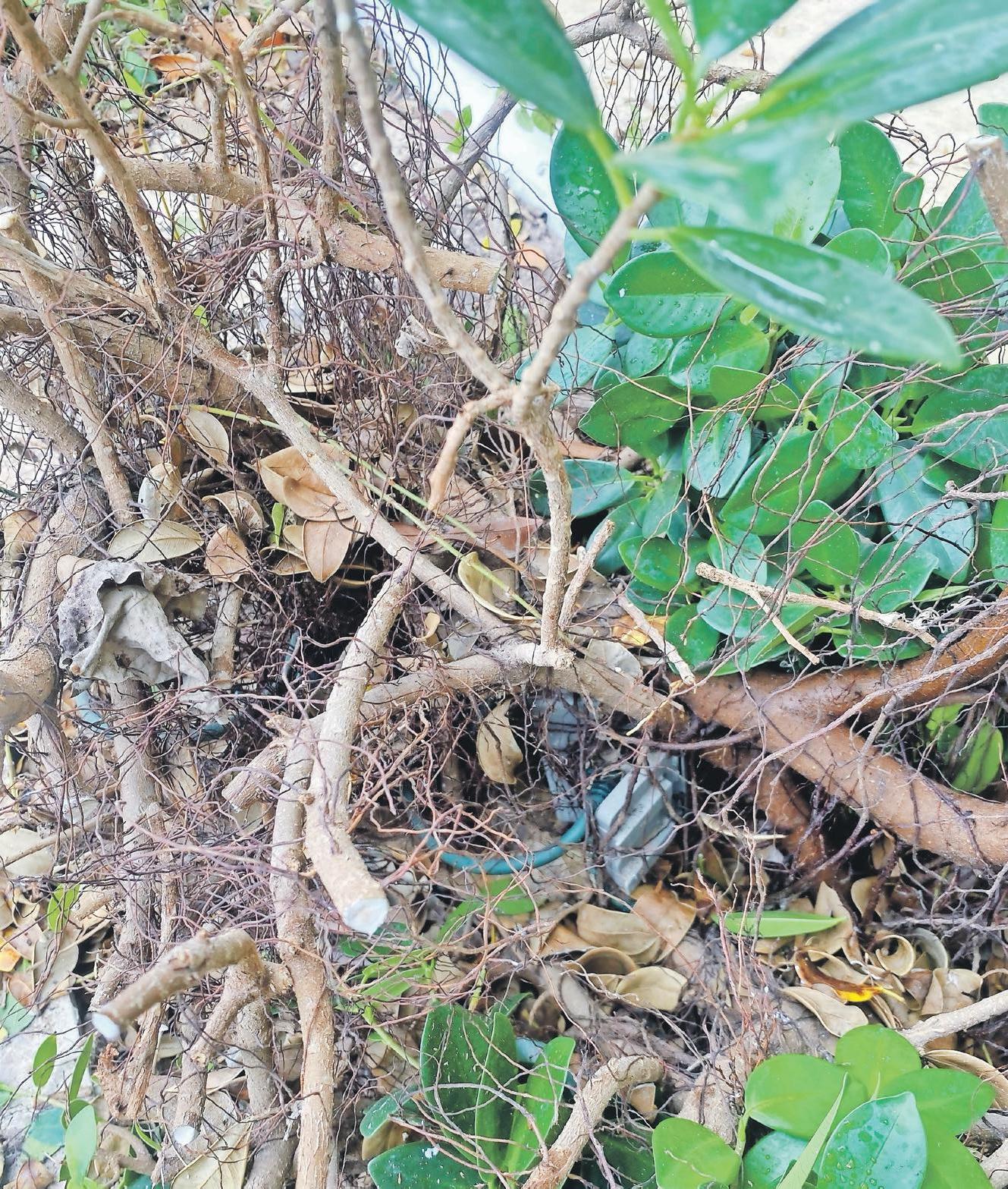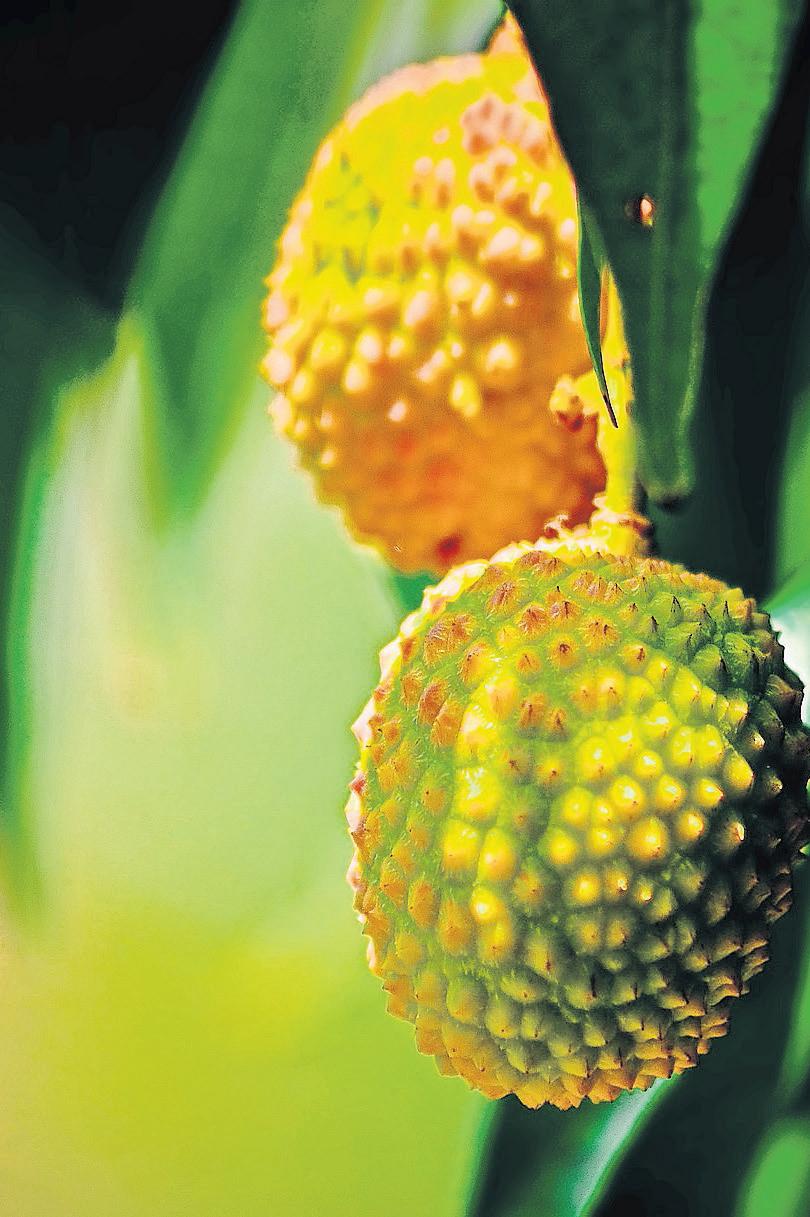
12 minute read
Gardening
from 08202021 WEEKEND
by tribune242
16 | The Tribune | Weekend
gardening All about the Pruning for Pruning methods lychee tree tree strength
Advertisement
GOOD day, gardeners! Pruning can be a very important part of keeping a healthy and balanced garden. Pruning is the act of cutting off tips, branches, stems or parts of a tree or a shrub, with the goal of strengthening those that remain.
Anyone who grows a good rose, will know about proper pruning timing and methods. There are many good reasons to prune and there are many bad examples of pruning about town. I’ve talked about pruning trees by thinning through the middle to allow airflow and pruning weak angles with the aim to leave only branches that have a 45-degree angle at the crotch (the place where the branch meets the trunk). Anything under 45 degrees is prone to breakage, especially in high wind.
What about shrubs? It’s a different story than pruning a tree. Tomatoes, a different story again. As we are not quite ready for tomatoes yet, shrubs are on cue. I must begin with the over-used and ubiquitous Ficus macrocarpa ‘Green Island’. They are often pruned regularly to maintain a desirable shape and size, usually quite low at around two to four feet as a hedge, or taller as a screen, espalier or topiary. Here’s the thing though; these shrubs are usually pruned only at the tips of the branches, usually very quickly and often with the wrong tools.
Many folks will pull out the hedge shears or electric or gas-powered trimmer or shears and scalp the top of the plant. The effect may look good, aesthetically, for a short while, but it is not the correct way to prune. In proper pruning of shrubs there is a general rule of thumb called the ‘1/3 rule’, that essentially states that no more than one third of a shrub should be pruned off at any one time. Plant growth is a balance between what is above ground, and what is below ground. Prune off too much and the plant can go into shock and attempt to heal by pushing out vertical, upright quick growth (or in some cases enter a die back stage). Prune off too little and it’s all but ineffective. When hedge shears are used to trim the tops and sides of a Ficus ‘Green Island’, there is created a green shell of foliage around a hectic branching system. Basically, a messy tangle of branches underneath a thin layer of shiny green foliage. I recently had the joy(!) of rectifying a hedge of this plant that had for years been trimmed only on the sides and tops.
It was a mess. Because the shrubs were not pruned according to the ‘1/3 rule’, there was maybe an inch and a half or two inches of foliage surrounding three inches of tangled, crossed, thick branches in the middle of the hedge. They had outgrown their space, and so when I began trimming back to size, it was such a drastic case that I had to take them right back and cut off much more than I normally would. As I began pruning back to keep them within the bounds that they were desired, I took off several inches of it, to find that it was only wood with zero foliage in the middle of the plant.
The customer was left with a woody hedge with almost no foliage. Fortunately, Green Island Ficus grow back very quickly. Prune the branches, not only the foliage. Take
GOOD day, gardeners! Time flies, yes? Time is subjective also. Had I planted a lychee (Litchi chinensis Sonn/Nephelium litchi Cambess) from seed 15 or 20 years ago, I might have a few lychee fruit from that tree by now to enjoy. Until then, they are a demanding shade tree at best.
Not particularly fast growing, the lychee takes its time to mature, and this is the reason that air layering exists. Commercially, they are layered for propagation as they grow a strong enough rootstock by that method and remain true to type. It is said that the choicest varieties have greater variation in offspring quality, and that the seed of the lychee is only viable for four to five days, so it is not something that is recommended to buy from unknown sources over the internet. I do not have 15 or 20 years to wait on those fruit, if you have got kids, well, eventually they may thank you for planting some of them. It certainly does not hurt to plant them anyway; every tree benefits every one of us.
If you are seeking lychee fruit in a faster time frame though, and if you have space for only a tree or two espe- a third of the branches and cut them cially, do not even bother with seeding back to half the size. Do this three them. Layer from a friend or neigh- times a year and you’ll be amazed bour’s tree or buy from a reputable at how thick and lush these plants supplier. Now, don’t get upset with me can be. Shrubs are meant to have if you’ve just seeded some and you’ve foliage throughout, not only at the got the space to plant them and let branch tips. A good place to look for them grow, grow them! Lychee trees are not very salt tolerant or wind tolerant and they are best planted in a protected location with full to part shade, preferably in a relatively deep soil base. They are a strong tree with a slow to medium growth rate and they have a relatively thick foliage to make a medium to heavy low hanging shade, but they are highly susceptible to nutrient diagrams or picture representations is rose pruning. This can set a good method for other shrubs. The wood needs to be pruned, not the soft foliage surrounding the wood. Landscapers (you know I love y’all, still) are often guilty of poor pruning methods, usually in the name of saving time. Money says that eight out of 10 Green Island Ficus deficiencies, OK? The history of the hedges or shrubs that one can find distribution of the lychee is complex will be a shell of foliage outside of and quite fascinating if you are up for a thicket of woody branches. These a follow up read, cite the first refer- plants can look so much better, but it ence noted below. takes time, and the correct tools and
The soils in our archipelago are pruning methods to achieve a show (generally and variably) alkaline winning shrub or hedge. Prune the and lychee’s native range is an acidic wood, not the leaves! As always, I wish you happy gardening.

base where they can thrive. At the Redlands in South Florida there are lychee groves that are highly productive in the good years (they are apparently quite cyclical), and when I was roaming the area a few weeks ago the trees were loaded, but the fruiting season in that location is finished now. The current issue now for lychee in the region (other than too much heat and humidity) is a mite that is affecting groves. The mite at issue is called the Erinose mite. It creates galls on the leaf and is supposedly quite difficult to eradicate. It is microscopic and too small to see by eye, but galls on the leaf of lychee will confirm the presence of them. To the best of my knowledge and research, we do not yet have the Erionose mite present in the Bahamas.
Lychee are grown successfully to our north and south, and there are large fruiting trees right here in New Providence. It is possible to grow a fruiting lychee tree, but as usual, it is recommended to either source from a reputable supplier, or to air layer a new tree from an existing fruiting tree. The fruits can be quite variable in size and texture, as well as in the time of year that they fruit in. As per the initial reference noted below, there are many varieties that have been prized in its native ranges in China, but they are limited as to what is available commercially even though they are grown through Asia, Southern Africa, and in the Americas and have been being transported for hundreds of years. The lychee has a grand history, that again I suggest taking a few minutes to read up on if you are interested. To conclude, plant lychee in a protected

NOW that we have had the first storm of the season pass through, pruning is again on my to-do list in the garden. We had some small trees get blown down in that (fortunately) weak tropical system Isaias, and it reminds me that tree pruning needs to continue. It is also a great time to prune hedges, shrubs, perennials, and anything branching. Much of the garden should be growing quite quickly at this time of year. If your garden is not growing quickly it may be worth doing some fertilizing to green and boost branching, flowering and root development. For those of us that are relegated to our own property to help stem the spread of COVID-19, get your clippers, hedge shears, saws or scissors out and get trimming!
It’s important to do a few things correctly when it comes to pruning larger trees, and even medium and small trees will benefit from these steps. Primarily, it is all about the branching angles. Wider angles make for stronger branching. Tighter angles make for weak branching. Early corrective pruning when the tree is young is the efficient way to location away from wind and salt prevent much heavier work in the spray. Choose an area with deep soils future. Try to encourage the crotch if possible and give them ample supangles on branches to be at least plemental nutrients throughout the 45 degrees from the upright, main year. As with anything in our region trunk, up to 90 degrees. This is there will be pest problems, but I especially beneficial to create wind have not noticed anything to attack tolerance (hurricane alley….!), and the lychee to the point where drasparticularly with fruit trees that tic remediation is necessary. Keep an bear more weight than the average non-fruiting tree. Allowing wind to easily move through a tree is always less work that cleaning up the mess left from a tree that the wind moved rather than moved through. eye on your young trees and try to keep the leaf a medium green colour, even though some colour variation exists between the named varieties. Happy gardening, and as always, good luck!
Always remove dead wood from trees and shrubs. Dead wood adds unnecessary weight, wind resistance and it can harbour pests and disease. Termites enjoy dead wood as well! Where to cut is as important as how to cut. For trees, the final cut after branch removal should be made at the branch collar so that the tree can heal properly without allowing for pests or disease to intrude. Here are some helpful pointers for pruning: • Dead, dying or unsightly twigs and branches. • Sprouts growing near the base of the trunk. • Crossed branches and branches growing toward the centre of the tree. • Narrow crotches. If it is possible to do so without ruining the appearance of the tree, remove one of the members forming the weak crotch. This helps to prevent future storm damage. • Multiple leaders. If more than one leader develops on a tree that normally has a single stem, cut out all but one to encourage the tree to develop its normal shape. • Remove branches that may develop into potential hazards such as low-hanging branches that interfere with traffic and weakened or dead branches that may break. • Single branches other than the leader sometimes develop faster than the rest of the tree. They need to be cut back to allow the tree to develop its normal shape. Other than pruning, it is still a very active season for garden pests. If you’re practicing a good IPM (integrated pest management) programme, hopefully all of your garden is not negatively affected by them at this point. Continue to monitor for crawling and flying insects and pests. As earlier mentioned, it may be time to get some plant nutrients down to support stronger pest resistance, wind resistance, branching, rooting, flowering, and fruiting except if your fruit tree has fruit on it now. If your tree has fruit left on it after the wind blew through, wait until a few weeks after the fruiting has finished to begin adding nutrients. Fruiting trees need quite a different fertilizing routine than non-fruiting trees. Native trees typically do not need to be fertilized, except maybe when young to promote stronger and faster
By ADAM BOORMAN • Tribune Features Reporter • acadet@tribunemedia.net
establishment. If there are no native trees in your yard, please consider planting one or more, if you have the space. If you do not have space for a native tree or more, native shrubs will encourage balance in the garden just as well as native trees.
I wish you all of the best during these difficult and trying times. I encourage you to get into the garden, get to pruning and trimming, get to fertilizing where necessary, and get to composting. Please, plant a native tree or shrub. Pay attention to trees when they are young to avoid problems with them in the future. As always, I wish you happy gardening!

Adam Boorman
An example of a weak branch angle susceptible to splitting. This type of branch should be removed.
IF left too long, pruning can get very messy. SLOW to grow and a demanding tree, you will have earned the fruits of your success if you cultivate lychee.
• Adam Boorman is the nursery manager at the Fox Hill Nursery. You can contact him with any questions you may have, or topics you would like to see discussed, at gardening242@gmail.com. • Adam Boorman is the nursery manager at the Fox Hill Nursery. You can contact him with any questions you may have, or topics you would like to see discussed, at gardening242@gmail.com. • Adam Boorman is the nursery manager at the Fox Hill Nursery. You can contact him with any questions you may have, or topics you would like to see discussed, at gardening242@gmail.com.





